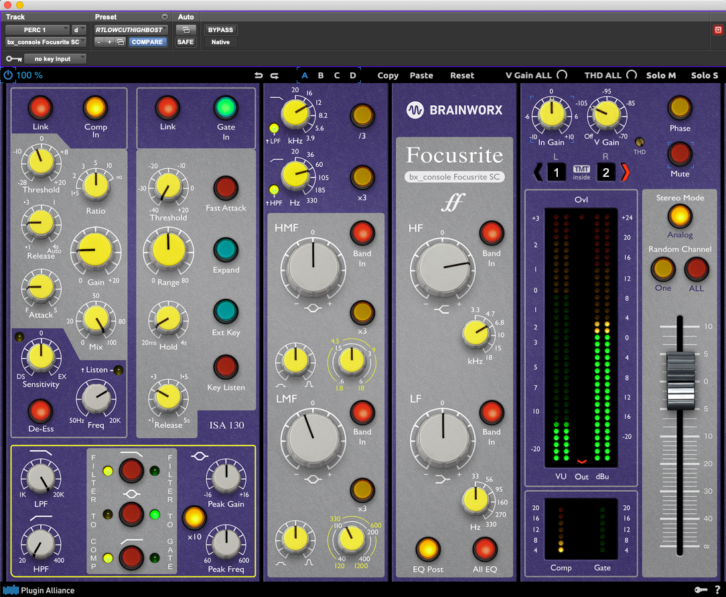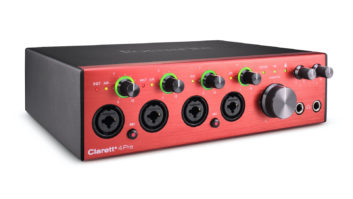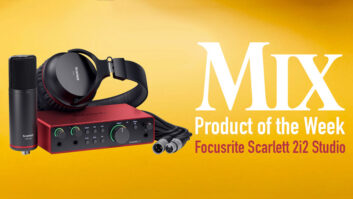
The epic Focusrite Studio Console was originally designed in the mid-80s by Rupert Neve, initially intended for George Martin, who wanted a musical design with low noise and extra wide bandwidth. While more consoles were made than just Martin’s, ultimately only 10 were built and nine are still in use today, making them rare and special beasts. This plug-in version, then, features ‘channel strips’ from an original Focusrite Studio Console, consisting of the ISA 110 Equalizer Module and the ISA 130 Dynamic Module, including Comp/Limiter, Expander/Gate and De-Esser.
I was lucky enough to work on the one at Bear Tracks Studios in Suffern, New York (Console 9) a few times, and that board eventually found its way down to IIWII Recording in Weehawken, New Jersey. There, owner John Hanti has ‘created’ Number 11 by merging Number 9, which was damaged in Hurricane Sandy, with elements of Number 2, which was found in Texas. “No other console sounds quite as good,” Hanti noted. Working also with IIWII engineer Billy Perez, the plug-in was beta-tested to compare results against the actual Number 11 desk, ensuring the Bx_Console Focusrite SC plug-in sounded accurate. How lucky we are!

I won’t go through every feature, but will instead simply highlight the ones I found most relevant in use. The Input stage is on the far right, with In Gain featuring +/- 10 db of cut or boost. There’s virtual gain for simulated noise floor, and THD (Thermal Harmonic Distortion) for extra ‘crunch’ using color and saturation.
The all-important EQ section features two shelves, the big knob for HF and the bottom big knob for LF. The same applies to the HMF and LMF knobs, and above them sit two filters, LPF and HPF, which can be engaged or disengaged by selecting the LED.
On the far left is the Compressor, De-Ess and Gate section, and below that are built-in filters which are fed into the dynamic sidechain. The whole plug-in is laid out in easy-to-use channel strips and can be enlarged up to 150%, which is something I wish every manufacturer would offer.
The Meter section, which includes a large fader, features VU and dBu and can be switched from input to output. It also includes an Ovl (overload) LED light at the top of the meter, which can bring about some very cool, pleasing distortion, quite unlike nasty digital clipping. There’s also Comp and Gate meters for the associated sections.
Apple Audio Unit Plug-Ins — A Real-World Review
One useful feature is the All EQ button, which lets you bypass all the EQ at once, giving you a quick idea of what that section is doing. You can also take each of the four bands in and out individually as well. The HMF and LMF are remarkably flexible because the frequency knobs are variable and sweepable, along with the X3 buttons tripling the selected frequency, allowing for easy sonic tweaking. Note that the EQ can flow before or after the compression with the EQ post button (It defaults to EQ after).
A useful feature is the Mix knob on the compressor, which lets you dial back some of the process, 0-100%. Also, under the hood, if you click three times on any of the three buttons in the sidechain section, they read ‘Audio.’ At that point, you can sweep the filter around to find the chosen frequency, then select Comp or Gate to send it to that section. Clicking on the button again sets it back to normal. This proves very useful for sidechain gating and compression techniques, especially with kick drums and low end.
Within a short period of time, this plug-in became a ‘go to’ in my daily workflow. I love it on hard rock electric guitars, pianos, acoustics, strings and orchestral elements, because it easily gets creamy and airy with absolutely no harshness—yet you can also musically overdrive it, add some harmonic distortion and still not sound harsh or nasty.
I sometimes throw the gate and percussion on drum loops which again delivers in the “wow, this sounds great” department. Not only does it unquestionably make my mixes sound better, but because you can increase the size, it’s easy to dial in quickly. With this plug-in, you use your ears, not your eyes, to get the best results. Kudos to the team at Brainworx who collaborated with Focusrite for delivering a tasty musical hit.
Brainworx • www.brainworx.audio







